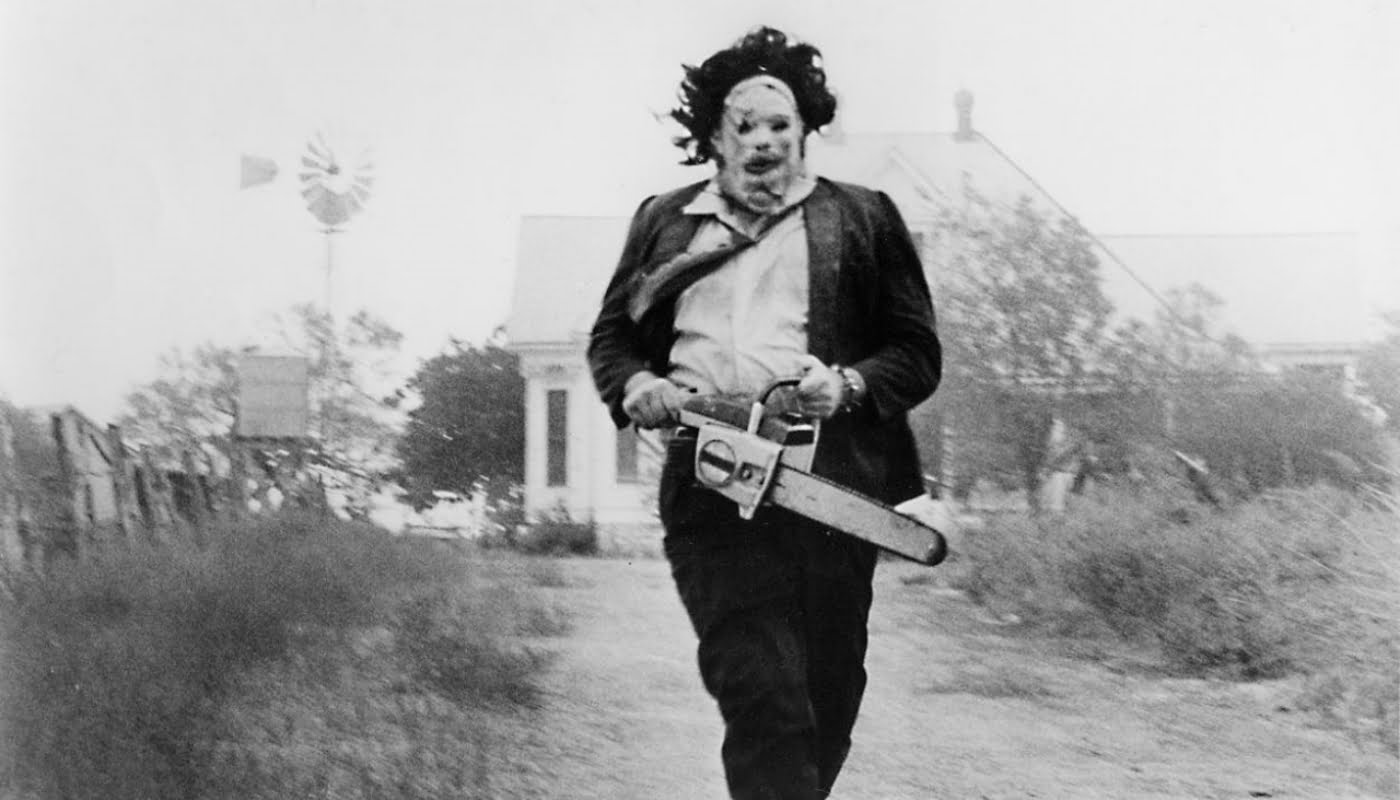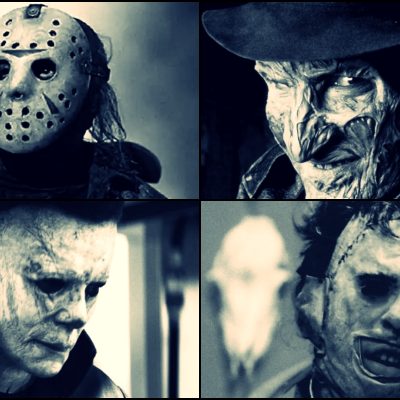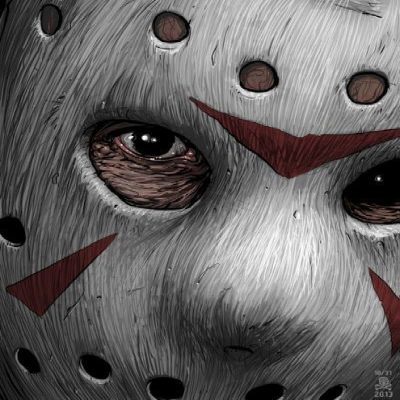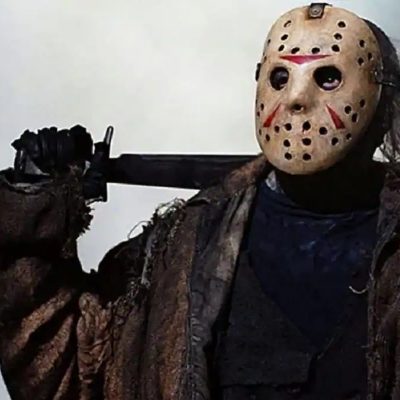Introduction
In the world of horror movies, few characters are as terrifying and iconic as Leatherface. This chainsaw-wielding maniac has been haunting our nightmares for over four decades, leaving a trail of blood and gore in his wake.
Leatherface first burst onto the screen in the 1974 classic “The Texas Chainsaw Massacre,” a film that would go on to redefine the horror genre. Audiences were shocked and terrified by Leatherface’s brutal killing spree and his gruesome mask made from human skin.
Since then, Leatherface has become a horror movie legend, appearing in multiple sequels, prequels, and reboots. But what is it about this character that makes him so terrifying? Is it his sheer brutality, his grotesque appearance, or something deeper and more disturbing? In this article, we will delve into the twisted mind of Leatherface and explore the dark history behind one of horror’s most iconic villains. So grab your chainsaw and get ready for a journey into the heart of darkness.

Creation
The origins of Leatherface, the infamous chainsaw-wielding killer, are as mysterious and disturbing as the character himself. It is said that the creators of “The Texas Chainsaw Massacre” drew inspiration from a number of sources, including real-life serial killers and gruesome crimes that shook the nation.
One of the most notorious killers that may have inspired the creation of Leatherface is Ed Gein, a Wisconsin man who murdered and dismembered at least two women in the 1950s. Gein also famously made clothing and furniture out of his victims’ skin and bones, earning him the nickname “The Butcher of Plainfield.” It’s been suggested that the grotesque mask worn by Leatherface in the film was modeled after Gein’s own homemade masks made from the skin of his victims.
But Ed Gein was not the only inspiration for Leatherface. The filmmakers also drew from other gruesome crimes, such as the Manson Family murders and the case of a Wisconsin man who killed his family and dismembered their bodies with a chainsaw.
In addition to real-life crimes, the creators of “The Texas Chainsaw Massacre” also drew inspiration from horror movies of the past. The film’s director, Tobe Hooper, has cited “Psycho” and “Night of the Living Dead” as key influences on the movie’s style and tone. The character of Leatherface, with his grotesque appearance and penchant for wielding a chainsaw, was meant to be the ultimate horror movie villain.
The creation of Leatherface was a collaborative effort, with input from Hooper, screenwriter Kim Henkel, and actor Gunnar Hansen, who played the role in the original film. Hansen’s performance as Leatherface, with his primal screams and frenzied attacks, helped to solidify the character’s place in horror movie history.
Despite the controversies and speculation surrounding the creation of Leatherface, there is no denying the impact that this iconic horror villain has had on the genre. With his grotesque appearance and deadly weapon of choice, Leatherface continues to terrify audiences and inspire fear in the hearts of horror fans around the world.
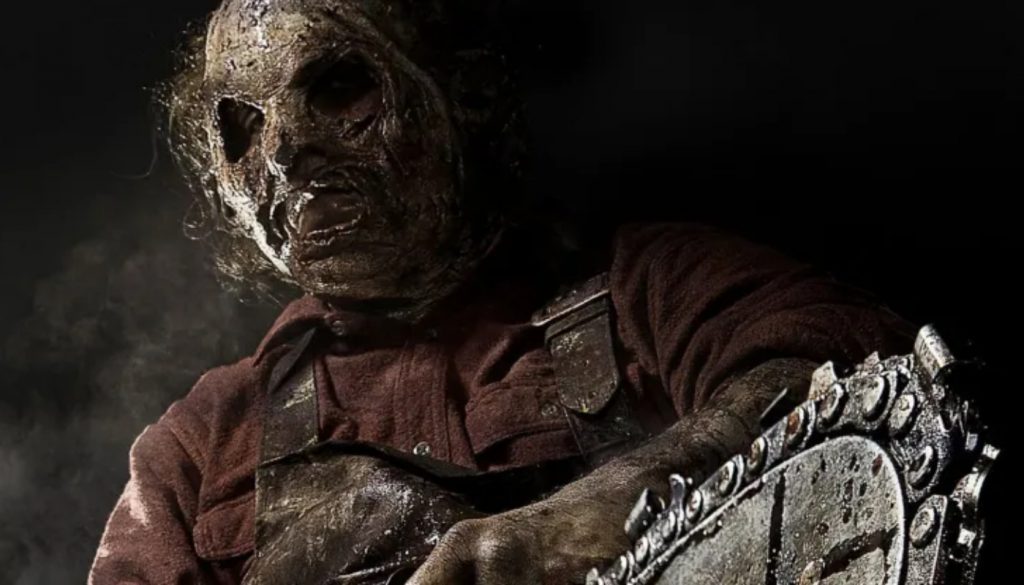
Mask
The mask worn by Leatherface is perhaps one of the most iconic images in horror movie history. Made from the skin of his victims, the mask is a twisted representation of the character’s violent tendencies and complete lack of empathy.
The mask has evolved throughout the various films in The Texas Chainsaw Massacre franchise, but the basic design remains the same: a grotesque and disturbing representation of the human face.
The mask is an integral part of the Leatherface character, and serves as a visual representation of his madness and brutality. It is a chilling reminder of the character’s willingness to commit unspeakable acts of violence in pursuit of his twisted goals.
In the 2003 reboot of the franchise, the mask was given a slightly different look, with more realistic features and a more weathered appearance. This version of the mask was designed to look like it had been worn and used for many years, adding an extra layer of terror to the character.
Overall, the mask worn by Leatherface is a haunting and unforgettable symbol of horror cinema. Its disturbing design and the use of actual human skin in its creation have cemented its place in the annals of horror movie history, ensuring that Leatherface and his mask will continue to terrify audiences for years to come.
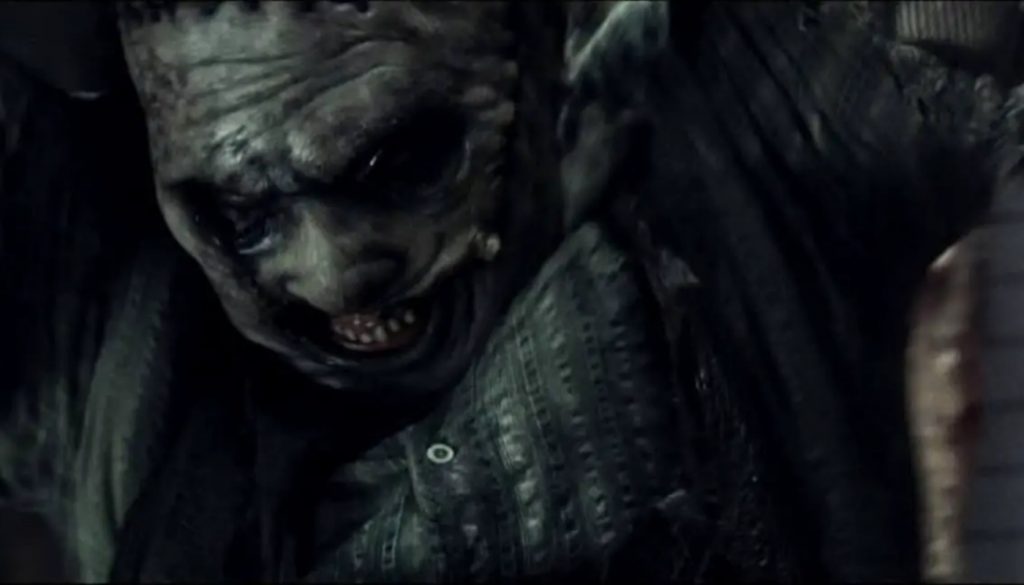
Characteristics
Leatherface is one of the most memorable and terrifying horror movie characters of all time, known for his grotesque appearance and savage attacks. His unique characteristics have made him an enduring icon of the horror genre.
At the core of Leatherface’s character is his appearance. He wears a mask made of human skin, which is both disturbing and unforgettable. The mask, which covers his entire face, is adorned with human hair and is held together with staples and nails. It’s a shocking and grotesque sight that has become synonymous with the character.
Leatherface’s weapon of choice is, of course, his trusty chainsaw. It’s a brutal and deadly tool that he wields with savage intensity. His chainsaw attacks are some of the most memorable and gruesome moments in horror movie history, leaving audiences both terrified and awed.
Another key characteristic of Leatherface is his strength and size. He’s a hulking figure, towering over his victims and overpowering them with his sheer strength. He’s often shown dragging bodies or carrying them effortlessly, a reminder of his inhuman strength.
But perhaps the most unsettling aspect of Leatherface’s character is his childlike behavior. He’s often portrayed as childlike and innocent, despite his horrific acts of violence. It’s a juxtaposition that adds an extra layer of creepiness to his character, making him even more disturbing and unpredictable.
In the end, it’s the combination of Leatherface’s appearance, strength, and unpredictability that makes him such an effective horror movie villain. He’s a monster that is both terrifying and fascinating, leaving a lasting impression on audiences long after the credits roll.
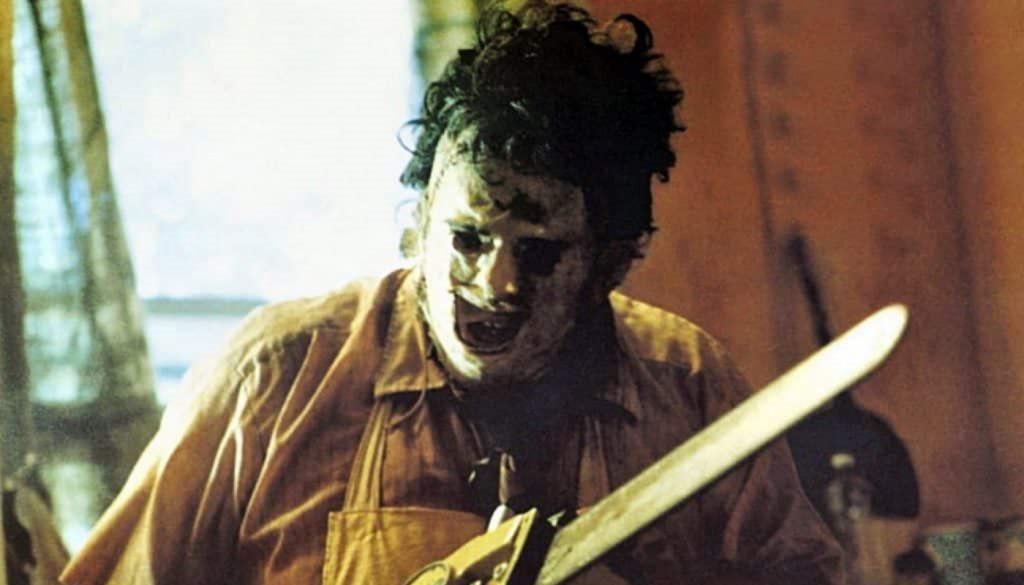
Biography
Leatherface, the iconic horror movie character, has become a legend of the genre. His full biography is as disturbing and twisted as the character himself.
Original Storyline
The dark and twisted story of Leatherface begins with the Sawyer family, a group of deranged and cannibalistic killers who reside in a remote part of Texas. Led by the ruthless Drayton Sawyer, the family is feared by all who know of their existence. However, it is his son, Leatherface, who is the most feared member of the family.
Leatherface, whose real name is Jedidiah Sawyer, is a towering and mentally disturbed man who wears a mask made from the skin of his victims. He is a silent and obedient follower of his family’s twisted ways, doing their bidding without question. His weapon of choice is a massive chainsaw that he wields with a frightening proficiency.
Leatherface’s first appearance was in the 1974 classic film, The Texas Chain Saw Massacre. In the film, a group of young friends unknowingly stumble upon the Sawyer family’s isolated farmhouse while traveling through Texas. They quickly realize that they are in grave danger as they are hunted down and killed one by one by the savage Leatherface and his family.
As the film progresses, Leatherface’s brutal and erratic behavior becomes more pronounced, revealing his deep-seated and twisted psyche. It is clear that he has been molded by the extreme violence and depravity of his family, making him a true monster in every sense of the word.
Despite his terrifying nature, Leatherface has become an iconic character in the horror genre, inspiring countless films and imitations. He remains one of the most feared and unforgettable villains in the history of cinema, a symbol of the darkest and most disturbing aspects of human nature.

Remake Storyline
Born as Thomas Hewitt, Leatherface was raised in a dysfunctional family in the backwoods of Texas. His family ran a slaughterhouse, where young Thomas was exposed to the brutal world of butchery from an early age. He was constantly abused by his family and was forced to wear a mask made of human skin to hide his disfigured face.
As Thomas grew older, he became more unstable and violent. He began to experiment with the tools of the slaughterhouse, using them to dismember animals and eventually humans. His family encouraged this behavior, seeing it as a way to make use of the leftover meat from the slaughterhouse.
Leatherface’s first known victim was a young woman who stumbled upon the Hewitt family’s property. Thomas and his family captured her and used her as a source of meat for their meals. From that moment on, Leatherface became a savage killer, using his chainsaw to brutally murder anyone who crossed his path.
Over the years, Leatherface’s reputation grew, and his name became synonymous with terror and violence. He became the star of numerous horror movies, each one more gruesome than the last. His legacy as a horror icon was cemented, and he became a cultural touchstone for fans of the genre.
Despite his status as a fictional character, the story of Leatherface is a cautionary tale about the dangers of isolation and abuse. His twisted journey from abused child to savage killer is a chilling reminder of the dark side of human nature.
In the end, Leatherface remains one of the most terrifying and unforgettable horror movie characters of all time, a testament to the power of the genre to both shock and entertain.

Appearances
The horror icon Leatherface has terrorized audiences for over four decades, starring in a number of films and making various appearances in other media. The character first appeared in the 1974 classic The Texas Chain Saw Massacre, directed by Tobe Hooper. The film spawned a franchise that would come to include eight films and one television series, all featuring the terrifying Leatherface.
Following the success of the original film, a sequel was released in 1986, entitled The Texas Chainsaw Massacre 2. The third installment, Leatherface: The Texas Chainsaw Massacre III, was released in 1990, followed by The Texas Chainsaw Massacre: The Next Generation in 1995. In 2003, the franchise was rebooted with a new version of the original film, simply titled The Texas Chainsaw Massacre. This was followed by a prequel in 2006, entitled The Texas Chainsaw Massacre: The Beginning.
In 2013, a new sequel was released, called Texas Chainsaw 3D, which was followed by Leatherface in 2017, a prequel to the original film. The most recent installment in the franchise is the 2022 film, Texas Chainsaw Massacre, which serves as a direct sequel to the original 1974 film.
In addition to his film appearances, Leatherface has also made appearances in various forms of media, including video games, comic books, and even a music video. He has become one of the most recognizable and beloved horror movie villains of all time, leaving a bloody trail of terror in his wake.
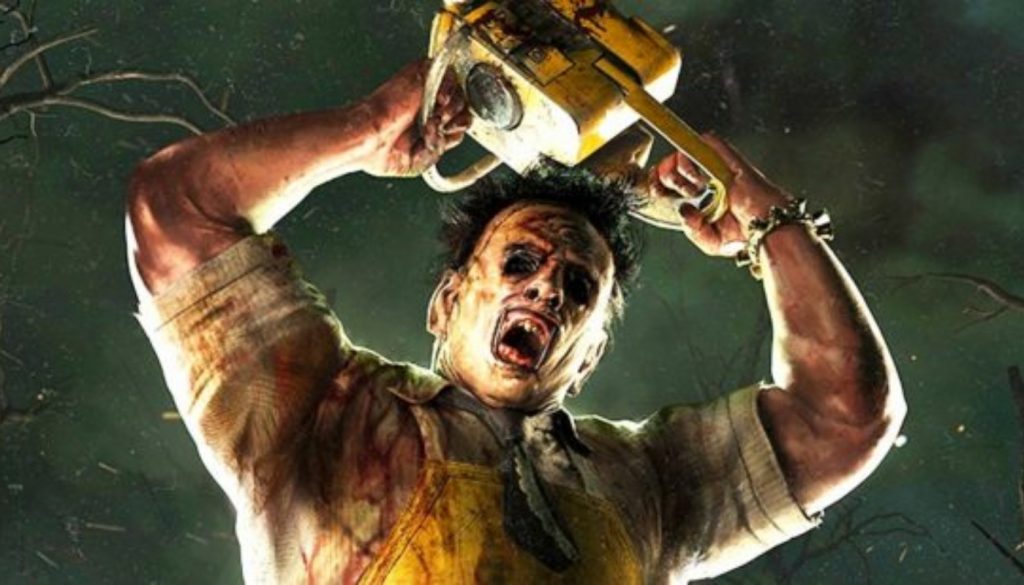
Reception
Leatherface, the chainsaw-wielding killer from the Texas Chainsaw Massacre franchise, has been a staple of the horror genre for over four decades. Since his debut in 1974, he has been terrifying audiences around the world and leaving an indelible mark on popular culture.
Leatherface’s reception has been largely positive, with many horror fans considering him to be one of the most iconic villains in movie history. His grotesque appearance, frenzied attacks, and intimidating presence have made him a fan favorite, earning him a place in the horror pantheon alongside the likes of Freddy Krueger and Jason Voorhees.
One of the reasons for Leatherface’s enduring popularity is his versatility as a character. He’s been portrayed as both a mindless killing machine and a sympathetic figure, with his backstory and motivations changing from movie to movie. This flexibility has allowed filmmakers to explore different aspects of the character and keep audiences engaged and scared.
Despite the praise heaped upon Leatherface by horror fans, he has also been the subject of criticism. Some have accused the character of promoting violence and misogyny, pointing to his brutal attacks on women as evidence of his problematic nature.
Despite this criticism, Leatherface remains a beloved figure in the horror community. He has inspired countless imitators and has become a symbol of the genre, representing everything that is scary and thrilling about horror movies.
In the end, the reception of Leatherface is a testament to his enduring appeal as a horror movie icon. He’s a character that has terrified and fascinated audiences for over four decades, and his legacy shows no signs of slowing down.

Trivia
As horror movie fans know, few villains are as memorable as Leatherface from The Texas Chainsaw Massacre franchise. With his grotesque appearance, deadly chainsaw, and maniacal screams, he has terrorized audiences for decades.
One reason Leatherface has remained so popular is the vast amount of trivia and lore surrounding the character. From his real name to the inspiration behind his creation, there are countless fascinating details to explore. So, buckle up and get ready for a wild ride through the world of Leatherface trivia.
- Leatherface was originally inspired by the real-life killer Ed Gein.
- The character was created by director Tobe Hooper and screenwriter Kim Henkel.
- In the original storyline, Leatherface’s real name is Jedidiah “Jed” Sawyer. In the remake it is Thomas Brown Hewitt.
- The mask he wears is made from the skin of his victims.
- Leatherface’s preferred weapon is a chainsaw.
- The Texas Chainsaw Massacre franchise has spawned eight films.
- Leatherface has been played by seven different actors.
- The original 1974 film was banned in several countries.
- The film’s budget was only $140,000.
- The character’s chainsaw was originally a real chainsaw modified to look more intimidating.
- Leatherface’s trademark scream was created by combining the sounds of a pig being slaughtered with a human scream.
- The original film was marketed as being based on a true story, despite being entirely fictional.
- Leatherface’s appearance was inspired by a 1950s Wisconsin murderer named Ed Gein.
- He is partially based on the concept of a killer who is simply following orders without questioning them.
- The original Leatherface actor, Gunnar Hansen, wore the same costume for 30 years after the film’s release.
- The character was originally intended to be much older, but the filmmakers decided to make him younger for maximum shock value.
- He was briefly featured in the music video for the 1986 hit “Walk This Way” by Aerosmith and Run DMC.
- The character has appeared in numerous video games, including Dead by Daylight and Mortal Kombat X.
- He has been parodied in numerous films and TV shows, including The Simpsons and South Park.
- The Texas Chainsaw Massacre has been remade twice, in 2003 and 2013.
- Leatherface has been portrayed as both a brutal killer and a sympathetic figure in various films.
- The chainsaw-wielding killer was ranked as the 17th greatest movie villain of all time by the American Film Institute.
- His iconic chainsaw has become a popular Halloween costume prop.
- The original film’s title was changed from Head Cheese to The Texas Chainsaw Massacre.
- Leatherface has become a cultural touchstone, with his image appearing on everything from t-shirts to action figures.
- The character has inspired a sub-genre of horror films known as “saw horror”.
- Leatherface’s signature move is the “chainsaw dance”, which involves swinging his weapon around wildly.
- He has been portrayed as both a mute and a talkative character in various films.
- Despite his reputation as a ruthless killer, some fans consider him to be a sympathetic character who is simply a victim of circumstance.


